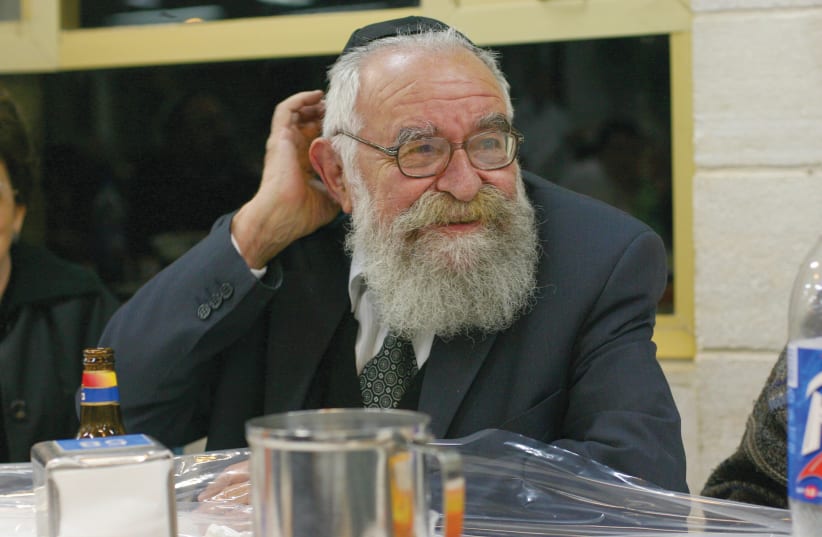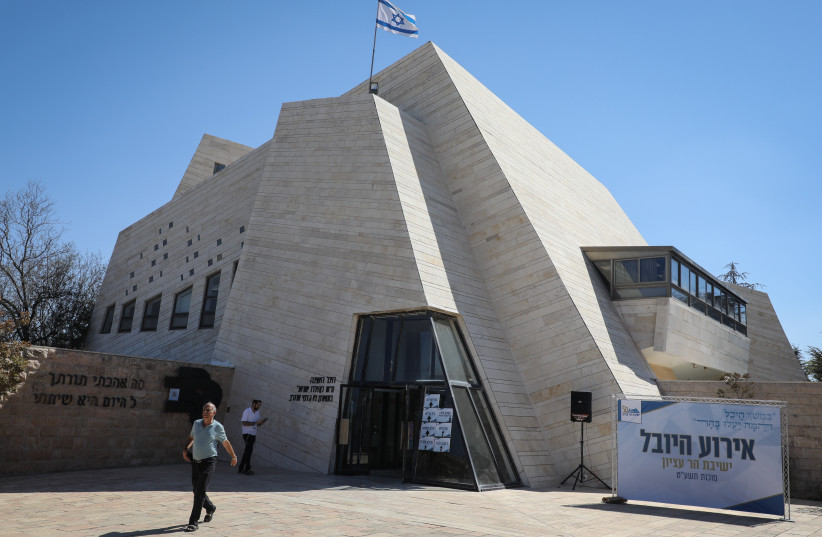Rav Yehuda Amital, born in 1924 in a small shtetl in Romania, lived through the revolutions of Jewish history in the 20th century. He survived the concentration camps and fought in Israel’s War of Independence.
After the war, he studied and taught in premier yeshivot in Israel, ultimately marrying the granddaughter of the famed Torah scholar Rabbi Isser Zalman Meltzer. By founding Yeshivat Har Etzion/Gush, he deeply shaped both the Israeli Torah world and the settler movement.
His life was a microcosm of 20th-century Jewish history, and he left an indelible impact on religious society in Israel.
Many Holocaust survivors were burdened by shame or guilt at having been selected for survival. For Rav Amital, survival produced a sense of mission to fill the void left by so many who had perished. Conscious of this mission, he changed his family name from Klein to Amital, to encapsulate a verse in Micah which portrays the Jewish survivors (ami ) as a regenerating force similar to dew (tal). Recognizing his own assignment of revitalizing our people, he took the name Amital.
In the aftermath of the Six Day War, it was evident that the religious community in Israel desperately needed a new yeshiva model. Limited options were available for students desiring to combine army service with serious Torah study. Hesder hadn’t yet taken off, and was certainly not viewed as the ideal option for aspiring religious young men. At a communal level, the Religious-Zionist community was in dire need of future Torah teachers and rabbis. Rabbi Amital launched Yeshivat Har Etzion, aware that he was designing a template for hesder in general. Seeking to preserve the spirit of the European yeshiva world, he also updated it. Chief among his updates was the restoration of serious Tanach study, which had been largely neglected for at least 500 years. Much of the hesder movement, which today numbers over 80 yeshivot, was shaped by Rabbi Amital’s original design.
Twenty years after forming the Gush Yeshiva and the surrounding city of Alon Shvut, Rav Amital was a driving force behind the formation of mechinot for students not interested in an intense five-year course of Torah study and army service. Through sculpting hesder, reviving Tanach study, and inaugurating the mechina movement, Rabbi Amital was responsible for most of the Torah institutions in the Religious-Zionist sector.
Rav Amital transformed and expanded the connotations of the well-known phrase kiddush Hashem, or “sanctifying God’s name.” Bringing God into our world extended beyond Torah study and beyond the performance of divine commandments, and even beyond martyrdom. God’s presence in our world is a function of the state and condition of His people. As our situation improves and our people prospers, the presence of God is amplified; conversely, when we suffer or even decline, His presence recedes. The arc of Jewish history determines the presence of God in our world, and the undulations of Jewish history yield both sanctification and desecration of His name – kiddush and hilul Hashem, respectively.
The Holocaust was the single greatest desecration of God’s name since the destruction of the Temple over 1,900 years ago. The systematic attempt to eradicate everything Jewish from the streets of Europe was an assault against the divine presence, not just the Jewish people. A few years later, the restoration of Jewish sovereignty and peoplehood in our ancient homeland replenished God’s presence and sanctified His name.
Annually, on Rosh Hashanah, Rabbi Amital would review the events of the past year, analyzing how they had affected God’s presence. From the fall of Communism to the rise of Islamic fundamentalism, human events in general and the trajectory of the State of Israel in particular were part of a larger divine drama.
Yitzhak Rabin’s assassination by a religious, hesder student was a desecration of God’s name which had to be reversed. Joining a secular government shortly after the murder was Rav Amital’s attempt to restore the presence of God after it had been disfigured during those dark days. As his students, we were constantly aware that our personal lives and our national history each determined God’s presence in the human realm.
Institutionalism
Viewing the state as a divine instrument of national restoration, Rabbi Amital was an institutionalist who respected the offices and symbols of our government. I recall heated staff meetings over the years in which the rabbi at my yeshiva debated various demands of the army or the government which we felt compromised our educational interests. Our stiff opposition and strong disagreement never degenerated into disrespect for the national institutions. Though we disagreed with government policies, the icons and agencies of the Jewish state were sacred. Rabbi Amital’s institutionalism is sorely needed in our current days of strife.
Jewish geometry
Though a student of Rabbi Abraham Isaac Kook’s writings, Rav Amital made an important break with a view adopted by many students of Rav Kook. Many of those students depicted a triangle composed of the three components of Torah, land, and people. A triangle metaphor implies inseparability, while suggesting that all three values are equivalent. In a triangle, each angle is equal.
Rabbi Amital altered this geometry by describing these three values as positioned along a chronological time line. Upon our departure from Egypt, our nation was born, while Torah was only delivered seven weeks later. Based on this chronology, when necessary the needs of Am Yisrael supersede Torah study. This calculation is already latent in much of Hassidism, which deeply influenced Rav Amital’s thought.
Similarly, Jewish peoplehood and Torah each preceded our entry into the Land of Israel, determining that both Torah and Am Yisrael supersede settlement of the land. Rabbi Amital lamented that our hyper-emphasis on settlement had distracted us from other national agendas. Likewise, Jewish nationhood required a partnership with a secular Israel which was disenfranchised from both Torah and Greater Israel. To Rav Amital, this partnership was a sacred duty to Am Yisrael, the highest of the three values. Finally, national needs, such as the prospect of peace, which in the 1990s seemed possible, would warrant painful land compromises. Converting the three values from a triangle to a time line dramatically altered Religious-Zionist ideology.
Rav Amital relandscaped the Israeli Torah world, saw the presence of God in the evolution of our state, and prioritized Am Yisrael as the cardinal value of life in Israel. ■
This article is adapted, with permission, from the piece appearing in the summer 2023 issue of Jewish Action, the magazine of the Orthodox Union.
The writer is a rabbi at Yeshivat Har Etzion/Gush, a hesder yeshiva. He has smicha and a BA in computer science from Yeshiva University, as well as a master’s degree in English literature from the City University of New York.

